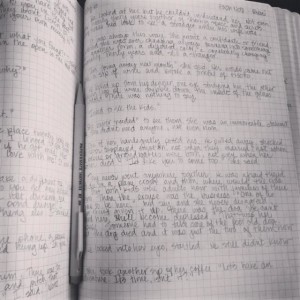 While I was at the San Francisco Writers Conference in February, I sat in on a few workshops with my favorite author (well, definitely in the top three!), Michelle Richmond. Not only does she NOT outline, she doesn’t write in a linear fashion. (My kinda writer. An organized pantser.)
While I was at the San Francisco Writers Conference in February, I sat in on a few workshops with my favorite author (well, definitely in the top three!), Michelle Richmond. Not only does she NOT outline, she doesn’t write in a linear fashion. (My kinda writer. An organized pantser.)
Another news flash: She also writes what she doesn’t know.
I know, I know. Writers are often told to embrace what they know and write about that. This was the first time a major author told us to consider writing what you don’t know.
I can see the value in this. First of all, if you are penning fiction that closely follows what happened in Real Life, you will often receive critiques. “This is unbelievable!” and then the resultant response, “But it really happened!” “But it’s not real!”
Good Lord.
Sometimes Real Life is too much. Real experiences sometimes are too graphic. A fictional story might be based in fact, but it doesn’t require an angst overload. However, your story does need enough conflict to keep the reader interested.
A little careful teasing helps here.
Also, if we are too familiar with a story, if we write more as a journalist instead of as an entertaining storyteller, we will focus too closely on the facts, to the exclusion of other possibilities with your story.
My novels are based in part on Real Life. The Virtual Moms are my fictional adaptation of the Beanie Mom online group I’ve belonged to for nearly 20 years. In some cases, a personality might be loosely based on one of my friends, but in other cases, I found I had to jazz up some of my characters. Give them recognizable quirks and personalities that are uniquely different from my real friends. I also had to come up with a plot that while it might have been plausible, it definitely did NOT happen to us.
The same holds true for Finding Cadence. People who know me saw my house as Cadence’s house; they knew which high-profile attorney I used as a muse for my antagonist; my son attended the San Francisco Conservatory; I grew up in Colorado. Most importantly, I’ve experienced that love and loss, the close but strained relationships between mother and child, spouses, and sisters.
But I had to change it up, and I did. I don’t write memoir; I write fiction, and most of the tale is just that – a story I concocted in my head.
Michelle Richmond writes what she doesn’t know as a way to get her to step outside herself and what she does know. She confessed that Golden State was written in this way. It’s an excellent idea, which requires the writer to research. Research equals found knowledge. The writer sees things from a different angle of the life prism. Not only does it expand the writer’s world, it expands the scope of writing.
After I get my current edit out of the way, I’m working (using the Paperclip Method) on the next story, which is now in bits and pieces. I think I’ll step way outside of my comfort zone and write about what I don’t know.








Pingback: Beyond Comfort: Writing (and Living) What You Don’t Know #2 | Joanne Huspek